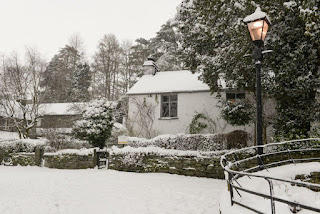
Snowdrops - the symbol of hope The soil is sleeping now. There is a surge of activity to come. The first snowdrops are poking their tiny buds above the sodden earth as if to enquire whether it is safe to emerge. The white bell shaped flowers, with smooth dull, green narrow leaves, are the first sign that spring is on the way. The snowdrop does not have petals but instead has six white flower segments, known as tepals. There are two structures three outer, convex in shape, and three inner, that are shorter, and have a small green notch at the top. Snowdrops do not rely on pollinators to reproduce but will usually be visited by bees and other insects on a warm day. Part of the national collection for snowdrops is held in Carlisle, Cumbria. Margaret and David MacLennan have more than 1500 species in their nursery, including species and named varieties. The scientific name for snowdrops is Galanthus - it means milk flower. Collectors of snowdrops are known as Galanthophile





